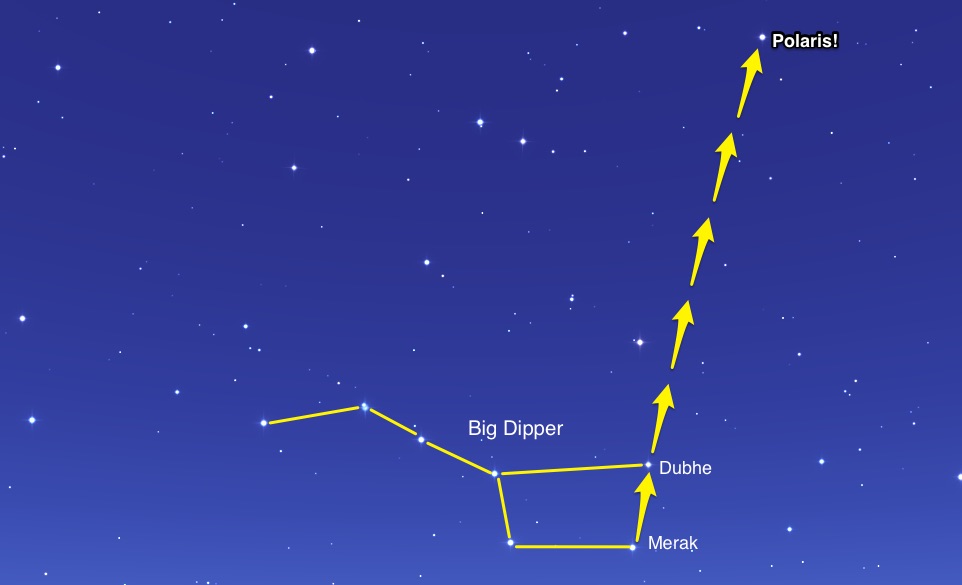People used to think that the Earth was the center of the universe.
Well, not everyone.
Really, Aristotle’s followers thought this.
Enough people to make an impression, anyway.
However, people who observed the motion of the stars & planets noticed problems with Aristotle’s model of the universe.
The biggest problems were retrogrades – when planets look like they are moving backward in their orbits around the Earth (…because they aren’t orbiting the Earth).
One dude who noticed these strange events was named Copernicus.
He was like, “Nope. The planets are orbiting the sun.”
And some people agreed with him.
But the idea didn’t really catch on until Galileo talked it up nearly a century later.
Beginning ~1613.
Honestly, feeling that the Earth is the center of the universe is understandable.
Our viewpoint of the universe is from the Earth.
Surprise!
Actually, we still have very little other than the viewpoint from the Earth that we started with.
And other viewpoints aren’t as helpful to most earthlings, anyway.
Seeing the constellations – and our north star – requires a viewpoint from our planet.
Furthermore, our viewpoint of the stars, even while on Earth, is location-specific.
You can’t see all of the same stars in the southern hemisphere and the northern hemisphere, for example.
What does this have to do with finding the north star?
Well, a lot, actually.
To find the north star, you have to start on Earth (check!), and in the northern hemisphere.
If you’re in the southern hemisphere, there isn’t a comparable southern pole star for you.
But other stars frequent the night sky below the equator that are difficult (or impossible) to see in the north – and which can also be used for navigation.
The Southern Cross, for instance. (I’m jealous.)
So.
To see the north star, head to Earth’s northern hemisphere.
Then, you need to find yourself in the correct time period.
I’m writing this in 2021.
If you come along and read this in 13,000 years, you’ll be looking for a different star than we are in 2021.
You’ll be looking for Vega.

What is the North Star?
Our current north star is Polaris.
And it has been for ~13,000 years.
Wait – what? The north star changes?
Yes. Every ~26,000 years.
You see – the axis around which the Earth spins migrates.
This wobble is called axial precession.
Stick with me – this matters!
The “north star” is an idea.
The idea of a star that points north.
But what if “north” changes?
The star you use to point you north would need to change, too.
Imagine, for a moment, that the axis earth spins around is a line extended through the Earth’s core and out into the universe, forever – in both directions.
There would be a point on the top of the Earth that the axis line passes through. That is the “north pole.”
There would also be a point on the bottom of the Earth that the axis line passes through. That is the “south pole.”
These are probably familiar ideas.
Santa & his elves live at the north pole, right?
Anyway, that extended axis line will also intersect with what is called the “celestial sphere.”
The celestial sphere is simply an imaginary sphere surrounding the Earth, onto which we can plot all of the stars and planets and galaxies and everything else space-y that we can see from Earth.
Sorta like a star map.
But spherical, with the Earth in the middle.
So…more of a star globe?
Back to Earth’s axis forever-line.
The two points at which that extended axis line would intersect with the celestial sphere are called the north and south “celestial poles.”
The celestial poles will appear to us, from the Earth, to never move.
So, if you find the Earth’s north celestial pole and then look at the stars near it in the celestial sphere, those stars will appear to be stationary, too.
And, from our perspective, would always point north.
The closest star to our north celestial pole (in our current wobbly-axis position) is Polaris.
Our north star.
The celestial north pole changes with the wobble of the Earth’s axis – and so does the north star.
But for the likes of us mere mortals, living between the years 2021 and 15,021, who just want to use the north star to navigate in the night, we will look to Polaris.
Polaris can be trusted to point north.

Navigation
You can also figure out your latitude using the north star.
Latitudes are the horizontal dividing lines on maps of the Earth.
The most famous one is the equator.
That, in fact, is 0° latitude.
One of the most important things to know when you are trying to find where you are in the world – say, if you’re sailing on a ship – is to find your line of latitude.
Finding the north star, and measuring the angle at which you view that star, will immediately give you an accurate latitudinal location.
If you are at the equator, the north star would appear to be on the horizon.
Your measurement between the horizon and Polaris would be 0° – and you would know you’re at 0° latitude.
Use a measuring device (compass, protractor, etc.) with a level to make sure topography doesn’t get in the way of your measurement.
If you measure 40° between “horizontal” and the north star, you would be located along the 40° latitude line.
Simple!
Finding latitude is important, but there are a whole lot of miles along any given line of latitude.
You will need longitude (the vertical lines on maps of the Earth) to locate yourself more precisely.
Otherwise, you will just really have to hope that you sail in the right direction along your latitude line…
So you can find that island with the buried treasure…
Or you’re bankrupt for sure.
Not to mention lost at sea…which I’ve heard really sucks.
Longitude takes more equipment – and the sun – to find without a GPS device.
If you’re reading this from a ship, you’ll have to wait until morning (and another post) to find your longitude.
So don’t worry about that right now, Captain Jack – let’s do what we can while it’s dark!
(And hope for a GPS to find its way to us by tomorrow, eh?)
Latitude.
North Star.
How do we find Polaris, anyway?

How to find the North Star
To find the North star, you don’t look for the brightest star in the sky.
That star would be Sirius – and you’d be lost again.
Instead, find the Big Dipper (also called the Plough).
1) Find the Big Dipper
You probably know this constellation. It’s one of the most famous (and coolest, if you ask me).
It is visible year-round and migrates around the north celestial pole each day, pointing toward Polaris.
Of course, it doesn’t actually move around our pole.
We rotate on our earthly, wobbly axis, and the constellation appears to move.
And that movement, that apparent motion of the big dipper, makes it a helpful reference point in our skies.
Why?
Because it rotates in a way that always points directly to Polaris.
7 stars make up the Big Dipper – 3 for the handle and 4 for the cup portion.
The handle of the dipper is always located to the left of the cup.
And the two stars that make up the right side of the cup?
The bottom star is called Merak, and the top star’s name is Dubhe.
The space that separates them (from our viewpoint on Earth, not the actual distance between the stars) is useful in two ways: direction and distance.
2) Follow the Right Side of the Dipper
First, direction.
Draw an (imaginary) arrow from Merak to Dubhe and beyond.
That arrow will point directly at the north star.
3) Find the North Star!
Now, distance.
Follow the direction of the arrow you made for ~5x the distance between Merak and Dubhe – and you’ll find Polaris!
That’s it!
You’ve found the north star!

Why find the North Star?
Why should you care about finding Polaris?
You don’t go gallivanting off to seek buried treasure.
Me neither. I don’t like digging.
Luckily, the treasure isn’t buried, man!
You don’t need to dig for it.
Knowing how to find the north star, and understanding what you’re looking at, is the real treasure.
Why?
Because you’re connecting with the past.
A past where cell phones didn’t exist.
A past where we relied on a sense of adventure and wonder and simple measurements to find our way across oceans.
A past that goes further back still:
The past of the stars themselves.
The light we see here on Earth when we look up at the stars – that is old light!
That light took years to get to us.
Years and years and years, in some cases.
Traveling at ~186,000 miles/second!
The speed of light. (So freakin’ fast!)
Polaris is ~323 light-years away from us.
So the Polaris we see now?
That light is a memory.
And you’re noticing!
You’re observing a memory that started its journey to Earth in 1698.
The same century that Galileo started promoting Copernicus’s idea that the Sun is the center of our solar system.
Isn’t that amazing?
And just think.
If you teach your kids how to find the north star,
And they pass it down to their children,
And so on –
In 323 years, your descendants could be looking at the light that Polaris emitted when you were looking at it right now.
In 2021.
That’s treasure enough for me.
Conclusion
It’s helpful to remind ourselves of the constants in life.
One of them – for the rest of our lives, anyway – is Polaris.
And how to find it.
The stars are always shining – even when our closest star (the sun!) is too bright for us to see the others.
And the north star is there – even if you find yourself in the southern hemisphere.
Or in the year 15,021, when your north star will be Vega instead.
But it will still point north.
Some things are bigger than we can imagine and farther away than we can fathom.
But we can still observe them.
And they can help us grow.
Isn’t that incredible?




